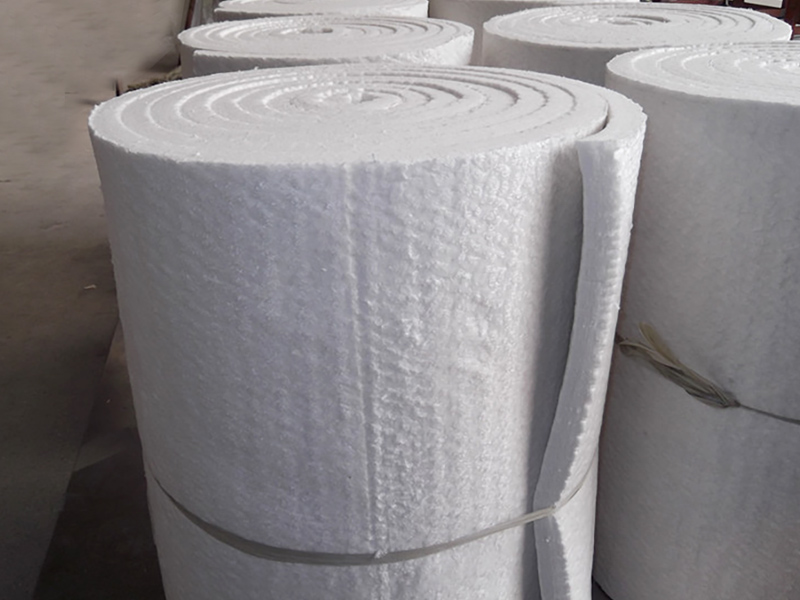Ceramic Fiber Blanket: High-Efficiency Thermal Protection for Modern Industrial Systems
In high-temperature operations where precision, efficiency, and safety depend on reliable insulation, the ceramic fiber blanket has become one of the most trusted solutions across global industries. Engineered from spun ceramic fibers and processed into flexible rolls, the ceramic fiber blanket offers a unique combination of lightweight structure, low thermal conductivity, and excellent resistance to thermal shock. Its performance characteristics make it an essential material for furnace linings, industrial equipment protection, and energy-saving upgrades.
A Material Designed for Extreme Heat
The manufacturing of a ceramic fiber blanket begins with the melting of high-purity alumina-silica raw materials. These are fiberized at high speed and formed into a uniform, high-strength blanket structure. The result is a material with exceptional insulation capabilities and stable performance under continuous exposure to temperatures ranging from 1000°C to 1430°C, depending on grade.
The ceramic fiber blanket maintains a low density and low heat storage value, enabling rapid heat-up and cool-down cycles without causing structural stress. This combination of thermal stability and flexibility is particularly valuable in equipment that undergoes frequent temperature changes, such as batch furnaces, kiln car linings, and heat-treating systems.
Mechanical Strength and Chemical Stability
Despite its lightweight nature, the ceramic fiber blanket demonstrates impressive tensile strength. The interlocked fiber structure resists tearing, vibration, and mechanical wear during installation and service. It also remains chemically inert in most industrial environments, including those involving reducing atmospheres, oxidizing atmospheres, or intermittent exposure to molten metals.
The blanket does not shrink excessively or become brittle when exposed to high temperatures, maintaining a consistent insulating layer over long service periods. This performance reliability is one of the key reasons the ceramic fiber blanket is used in furnaces, reactors, ducts, and thermal processing chambers worldwide.

Expanding Applications Across Multiple Industries
The versatility of the ceramic fiber blanket continues to drive its adoption in a broad range of industrial sectors.
Metallurgy and Heat Treatment:
Furnace linings, billet heaters, forge furnaces, ladle insulation, and continuous casting equipment rely on the ceramic fiber blanket for temperature uniformity, energy conservation, and protection of surrounding components.
Petrochemical and Refining:
Reformers, cracking units, duct linings, stack insulation, and burner zones use the ceramic fiber blanket to reduce heat loss and ensure stable operation even under corrosive gas exposure.
Ceramics and Glass:
Kiln roofs, kiln doors, and hot-face linings incorporate the ceramic fiber blanket to manage thermal cycling and protect structural refractories from rapid expansion.
Power Generation:
Boiler walls, turbine insulation, flue gas ducts, and heat-recovery systems benefit from the blanket’s high insulation efficiency.
Fire Protection and Construction:
The ceramic fiber blanket is often used in fireproof doors, fire barriers, and high-temperature acoustic systems due to its Class A1 non-combustible rating.
This broad applicability highlights the blanket’s ability to adapt to different operating conditions while delivering consistent performance.

Efficiency That Translates Into Long-Term Savings
Because of its low thermal conductivity, a ceramic fiber blanket provides significant energy-saving benefits. Furnaces retain heat more efficiently, fuel consumption decreases, and shell temperatures remain lower, improving both economic performance and workplace safety. Many manufacturers have adopted the ceramic fiber blanket as part of their long-term sustainability strategies, reducing carbon emissions and optimizing heat utilization.
Installation is also streamlined due to the blanket’s flexibility and ease of cutting. It can be layered, anchored, wrapped, or combined with rigid modules, allowing engineers to design insulation systems tailored to specific equipment and temperature zones.
A Material Aligned With Modern Industrial Needs
As industries push toward higher efficiency, stricter environmental standards, and lower operational costs, the ceramic fiber blanket continues to play a central role in thermal system optimization. Its combination of lightweight design, thermal performance, durability, and adaptability provides engineers with a dependable solution for demanding high-temperature environments.
Inquiry Now
Please leave your e-mail and we will contact you as soon as possible
contact us
Your satisfaction is our top priority. Whether you have questions, need support, or want to share feedback, our dedicated team is ready to assist you every step of the way.